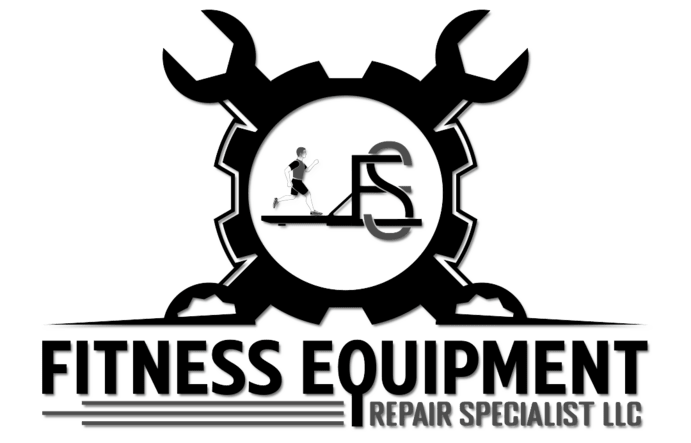
A Guide Replacing Worn Fitness Equipment Parts for Continued Performance
April 28, 2024
Elliptical El Dorado – How To Maintain Your Elliptical for Highest Performance
April 28, 2024The treadmill is a dependable partner in your pursuit of fitness and a faithful companion for many miles. To maintain your treadmill operating smoothly and safely, though, it needs a little TLC just like any other workout companion. Not only does routine maintenance increase the longevity of your investment, but it also guarantees peak performance and lowers the chance of accidents.
This article explores the topic of treadmill maintenance and offers simple advice that will keep your treadmill running smoothly for years to come.
- Cleaning is Key: A smooth-running treadmill’s adversaries are sweat, dust, and filth. Here are some cleaning tips for your treadmill:
- Wipe Down Regularly: Use a moist microfiber towel to clean the running belt, handlebars, and console after each use. Sweat, dust, and debris that can accumulate and harm electrical components or impair performance are removed in this way.
- Deep Clean Periodically: Give your treadmill a deeper cleaning once a month. The running belt and adjacent parts can be cleaned with a moist cloth and a light soap solution. Steer clear of abrasive cleaners and aggressive chemicals as they can harm the materials..
- Vacuum the Underside: At least once a month, perform a vacuum underneath the running belt to get rid of hair, debris, and dust that can build up and impair motor performance.
- Maintaining the Running Belt: The treadmill’s running belt is its main component. Here’s how to make sure it remains in excellent shape:
- Tighten When Necessary: The running belt may stretch and loosen over time. Running unevenly and slipping can result from this. For instructions on tightening the belt, refer to the manual that came with your treadmill. In most cases, adjusting the tension screws at the treadmill’s back is a straightforward procedure.
- Lubricate Regularly: To lessen wear and friction, the majority of treadmills need to have the deck and running belt lubricated on a regular basis. Use a lubricant made especially for treadmills and adhere to the application and frequency guidelines provided by the manufacturer.
- Center the Belt: To prevent uneven wear, the running belt should be centered on the deck. See your handbook for adjustment instructions if your belt begins to sag to one side.
- Deck Cushioning Matters: In addition to absorbing shock, the deck cushioning offers a comfortable running surface. Here’s how to maintain it in good condition:
- Inspect for Damage: Check the deck cushioning on a regular basis for excessive wear, tears, or cracks. Damaged cushioning can impair stress absorption and result in pain or accidents.
- Replace When Necessary: It is essential to replace the deck cushioning if you see any damage to it in order to preserve appropriate shock absorption and a comfortable running experience. Typically, authorized shops or the treadmill manufacturer offer replacement deck cushions.
- Don’t Neglect the Motor: The treadmill’s motor is its main component. Here’s how to maintain its flawless operation:
- Cool Down Properly: Before shutting off the treadmill after an exercise, let the engine cool for a few minutes. This aids in avoiding overheating, which may harm the engine.
- Keep Vents Clear: The motor vents facilitate the release of heat. Vacuum the vents frequently to get rid of dust and other material that might obstruct airflow and cause overheating.
- Consult a Professional for Major Issues: See an experienced treadmill repair expert if you encounter any motor-related problems, such as strange noises, burning smells, or decreased power.
Try adding these extra maintenance suggestions to your routine to make sure your treadmill stays in top shape. First, for model-specific maintenance instructions, including lubrication suggestions and troubleshooting advice, go to the user handbook that came with your treadmill. Putting in a rubber mat beneath your treadmill improves stability and shields the floor from perspiration and debris.
To reduce the possibility of electrical surges or damage, always remember to unplug your treadmill while not in use. It can also be advantageous to plan for expert maintenance servicing every one to two years, depending on how frequently you use your system. An experienced technician can carry out a thorough examination, clean internal parts, and spot possible problems before they become serious ones.
Taking The Time To Maintain Your Treadmill Offers Numerous Benefits:
- Your treadmill can last much longer with regular cleaning, lubrication, and proper use, saving you money on expensive repairs or replacements.
- A well-maintained treadmill maximizes your workout experience by offering a smooth, reliable running surface and top performance.
- The risk of injuries from loose parts, worn-out padding, and uneven belts is reduced with proper maintenance.
- Exercises that are safer: A well-maintained treadmill reduces the possibility of falls, slips, and other mishaps by providing a steady and dependable running surface.
- You can concentrate on your training without worrying about possible glitches or breakdowns when you know your treadmill is in fine working order.
Bonus Tips – Troubleshooting Common Issues:
While most issues can be avoided with routine maintenance, the following frequent treadmill problems can be resolved:
- Treadmill Won’t Turn On: First, make sure the power switch is on and the treadmill is plugged in. Next, go to your model’s user manual for detailed troubleshooting instructions. It is preferable to get in touch with a trained professional if the problem continues.
- Belt Slipping: The most frequent reason for treadmill slippage is a loose belt. As directed by the directions in your handbook, tighten the belt. The belt may need to be replaced if it is worn out too much.
- Uneven Running Surface: A worn-out deck cushion, a misaligned belt, or a malfunctioning motor mount can all contribute to an uneven running surface. For steps on troubleshooting, refer to your handbook or think about hiring an expert.
- Unusual Noises: Unusual sounds such as clunking, grinding, or squeaking may be signs of impending issues. For diagnosis and repair, consult your handbook or get in touch with a technician.
Conclusion: Kepping Your Treadmill On Track
By including these simple yet effective maintenance tips into your routine, you can ensure that your treadmill will be a dependable partner in your fitness quest for many years to come. Remember that routine maintenance will keep your treadmill running efficiently, safely, and smoothly so you can focus on meeting your exercise goals worry-free.

